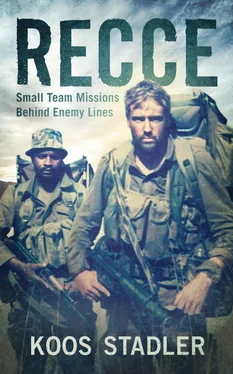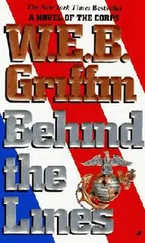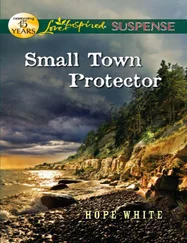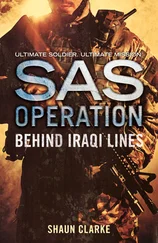The technique Kloppies and I used to sustain ourselves and still remain undetected was to cache the backpacks about 200 m away from the road, at an easily identifiable position that also served as the crash RV. We would then move forward to our positions before first light, with only webbing and a small pack (a “SWAPO bag”, as we used to call it) containing a day’s food and water. Come daylight, we would both be dug in and as comfortable as possible in a position where the slightest movement could expose us.
Meals consisted of cold food, with packaging that would not make any noise when opened, and that would not smell once opened. We took water through a plastic tube from a water bottle in the SWAPO bag, which was well concealed with the rest of the webbing on our bodies. Relieving oneself would be out of the question, although I managed to let it out bit by bit into the hole that served as my hideaway, not entirely without messing up my trousers and boots.
At last light we would both withdraw to the RV, establish comms with the Tac HQ, have a quick meal, relieve ourselves and move into a hide for the night, just to be ready before first light to repeat the previous day’s routine.
The operation was a success, as Kloppies detonated the mine at exactly the right moment under the nose of a vehicle approaching from the south. The targeted vehicle turned out to be the Land Rover of a senior SWAPO official. During this trip I learned the importance of patience. And I discovered how easy it was to conceal your body with a bit of creative deception.
While operations such as these were conducted at a tactical level and were probably not central to the wider war effort, they provided invaluable learning opportunities. We slowly but surely amassed a wealth of experience and established a unique modus operandi for deployments to come.
In my mind, the two-man concept soon became synonymous with reconnaissance missions. Initially it took a massive mind-switch to leave the rest of the team, the bulk of the ammunition and the support weapons behind. Now it became second nature. Any team bigger than three became a potential giveaway. With only two in the team, stealthy movement and anti-tracking became easier, as each individual was now more alert and would automatically pay attention to every little detail.
By this time my colleagues in the recce wing had accepted the small team concept as the ideal for close-in recce missions. Fortunately, Commandant Opperman and Major Oelschig at Sector 70 (Katima Mulilo), because of their close involvement with the recce wing, allowed the team leaders a free hand in the composition of their teams for missions into Zambia.
However, as we started to deploy into southern Angola, in mid-1980, we discovered that the commanders of Sector 10 (Oshakati) and Sector 20 (Rundu) were not too eager to deploy teams smaller than eight. This was probably based on conventional thinking that any group smaller than an infantry section of ten soldiers would be too vulnerable.
5
The Realities of War:
Fighting Patrols into Angola
IN DECEMBER 1980 SWAPO was active in the area of Eenhana, a settlement and forward military base in central Ovamboland, close to the border. According to intercepts, SWAPO’s Eastern Front was positioned northeast of a cluster of Angolan villages called Mulemba. Their very capable commander, known only by his combat name, Mbulunganga, had deployed his forward detachments roughly 30 km from the border with South West Africa, a distance SWAPO considered far enough to be safe from South African retaliation. One of Mbulunganga’s most competent detachments was deployed at Chana Ohaipeto. This area served as a staging point for infiltrations into the farmlands of South West Africa during 1980 and 1981.
The SWAPO detachment was on high alert because 32 Battalion had been operating in this area throughout 1980. Moreover, the insurgents appeared to be exceptionally aggressive. Numerous contacts with the SADF were initiated by SWAPO – at times and places of their choosing.
During 1980, elements from 31 Battalion started deploying more frequently in the Sector 10 area of responsibility, including Ovamboland and areas immediately north of the border in Angola. The reason for this was twofold, firstly because cross-border operations into Zambia had been terminated after Zambia’s government gave SWAPO the boot, and secondly because the Bushmen had steadily been building up a sound track record and were now in high demand in other operational theatres.
Although reconnaissance was the recce wing’s bread and butter, fighting patrols offered a welcome break from the continuous pressure of small team operations. During one such deployment in the area of Chana Ohaipeto during December 1980, we decided that we would apply the same stealth and spoor discipline as during any recce mission.
We were a fighting patrol of three six-man teams with a small HQ element – myself, the radio man and the RPG gunner. Since there was a lot of enemy activity, we would establish a temporary base for one night only and move out before first light. We left no sign of our presence and applied anti-tracking techniques to deceive anyone who might find our spoor. During the day we would set up an ambush site along the edge of one of the chanas, the large open flood plains common in the area, and deploy an observation post to keep watch across the open plain and the kraals along its edges.
One day, while sitting in one of these ambush sites, three SWAPO cadres unexpectedly walked into our position. Two of the team leaders and I were crouched over a map in the middle of the all-round defensive position when somebody shouted, “SWAPO!” The three guerrillas had their rifles slung over their shoulders and couldn’t get them into action fast enough. As soon as they realised they were not among their own comrades, they just pelted out of there in all directions.
One of the team members grabbed the RPG-7 and, in the heat of the moment, applied it without considering his mates. The three of us who had been stooped over the map rushed to fall into attack formation but suddenly realised we were running straight into the backblast zone of the RPG. I heard a voice shout “RPG!” and had the presence of mind to go into diving mode.
The backblast of the weapon threw me backwards with the other two. Except for burnt eyebrows and damaged egos, no one was injured, and we collected ourselves once again to move into extended line, although by now there was nothing to attack. We packed up fast and moved out on the enemy spoor, knowing that the larger group had to be in the area.
The three SWAPO cadres had been in light order, with only their weapons and chest webbing, a clear indication that they had been on a security patrol around the edge of the chana. Twice we found positions where the detachment had made camp, complete with shallow trenches and good escape routes. Numerous fresh tracks dotted the area, but by nightfall we hadn’t found any more enemy and decided to move away from the chana to bed down for the night.
But there would be no rest for us that night.
By midnight SWAPO declared its presence by bombarding the position along the chana edge, where we had been searching for them earlier. Then, gradually, after there was no response from us, they moved their fire further into the bush in the direction of our hide.
Anyone who has been under mortar bombardment at night will know the sickening fear that comes with the uncertainty of not knowing where the next bomb will drop. There is nothing more unnerving than hearing the thump of an 82-mm mortar leaving the tube some distance into the night, and then waiting for the bomb to explode. In that instant the same question is on your own and the bomber’s mind: will the bomb find its target?
Читать дальше












